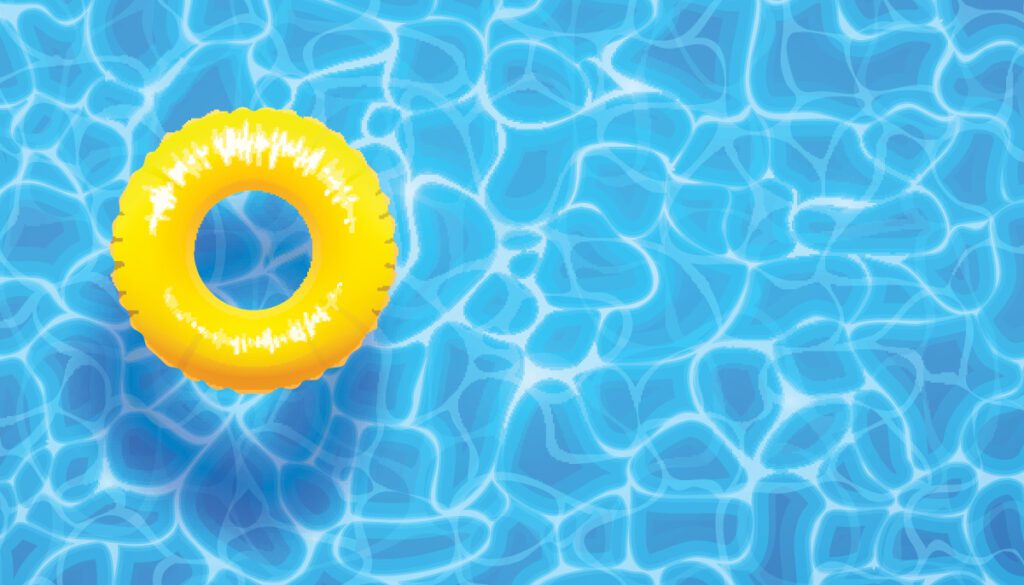Protect Your Skin From the Brutal Summer Sun
by TERESA SCHIFFER
Living in Central Florida, we are acutely aware of the effects of the sun. They don’t call us the “Sunshine State” for nothing! As wonderful as it is to bask in the warm glow of the sun day after day, too much sun exposure can be a dangerous thing. Working in the hot sun can lead to heat exhaustion or heat stroke if precautions aren’t taken, and an even more serious threat from the sun is the risk of skin cancer. Skin cancer is the most common form of cancer, with new cases annually surpassing those of breast, prostate, lung, and colon cancers put together. Fortunately, we have access to a form of protection that is readily available, affordable, and easy to use — sunscreen.
Why is it important to use sunscreen? In the short term, a sunburn can occur surprisingly quickly and can range from annoyingly uncomfortable to exceedingly painful. Over the longer term, damage from the sun can lead to unsightly changes to our skin, such as skin spots, wrinkles, or a “leathery” look. However that damage may affect your vanity, the threat of skin cancer should be taken very seriously. Every year, over 80,000 Americans are diagnosed with melanoma, the most dangerous form of skin cancer, while over 4 million people are treated for basal cell cancer and squamous cell cancer in the U.S.
Find One That’s Right for You
When it comes to sunscreen, a lot of us tend to dismiss it as unnecessary, since we aren’t spending hours out in the sun roasting in our bathing suits. However, the sun’s ultraviolet rays can cause damage to your skin in as little as 15 minutes. As we go about our day, traveling to and from work, stopping at the store, taking a walk around the block, we are contributing to the cumulative damage that the sun can cause. Most doctors agree that in Florida we should all wear a daily sunscreen with an SPF of at least 30 to provide protection from this type of incidental exposure. Be sure that your sunscreen is Broad Spectrum, meaning it protects against both UVA and UVB rays.
Most sunscreen products work by reflecting, scattering, or absorbing sunlight. The chemicals in sunscreen interact with your skin to provide protection from ultraviolet radiation. Different products use different formulas, so experiment to find one that you like and works well for you. Sunscreen has a shelf life of approximately three years, but that is shortened if it has been exposed to high temperatures. Check your products for expiration dates; when in doubt, throw it out.
Creams and lotions are preferable to sprays when it comes to sunscreens. The main problem with sprays is that it can be difficult to know if you have applied a sufficient amount, due to the spray dissipating around you, especially if you are applying it in the wind.
What’s In Your Sunscreen?
The FDA recommends sunscreens that contain titanium dioxide or zinc oxide, as these ingredients are “generally recognized as safe and effective” (GRASE). Two ingredients the FDA does not consider GRASE are PABA and trolamine salicylate. Sunscreens containing these two non-GRASE ingredients are not currently sold (legally) in the United States. There are 12 other ingredients that the FDA is currently investigating to determine whether or not they can be classified as GRASE. These ingredients are ensulizole, octisalate, homosalate, octocrylene, octinoxate, oxybenzone, avobenzone, cinoxate, dioxybenzone, meradimate, padimate O, and sulisobenzone. The first seven of that list are commonly used in the U.S., while the last five are not.
While a Broad Spectrum SPF 30 sunscreen might be fine for your daily routine, don’t think that a quick coating of that will protect you all day if you are out at the beach, the park, or otherwise enjoying time outdoors. You need to really slather on the sunscreen – we’re talking about a shot glass full (1.5 ounces) to cover the whole body. If you aren’t using enough, then you aren’t receiving the full protection of the stated SPF. Apply sunscreen about 30 minutes before heading outside, and then reapply every two hours. If you are swimming or sweating a lot, you will need to reapply more frequently.
Don’t Stop With Sunscreen
Besides sunscreen, there are other protective measures you can take to safeguard your skin. If you need to be outside for a while, seek the shade. Wear garments that provide a defense against the sun, too. A white T-shirt has an SPF of about 8, but many athletic brands now produce clothing that is protective against the sun’s harmful rays. This type of clothing will have a UPF (ultraviolet protection factor) number as opposed to an SPF (sun protection factor), but it means pretty much the same thing. Much of this clothing will have a UPF of 50, so it is an effective and wise choice for those days you plan on being outside a lot.
Don’t forget to protect your eyes, as well. While no one will recommend squirting sunscreen into your eyes, sunglasses are a good idea. Not all sunglasses are the same, though, so make sure your pair has UV protection to shield your precious peepers from the harmful rays that can cause cataracts or even melanoma of the retina. If you are out on the water, this becomes even more important because the sunlight reflects off the water, effectively doubling your sun exposure. A wide-brimmed hat is another accessory that will provide extra protection from the sun.
The bottom line? Protect yourself from the sun every day – period. The sun’s ultraviolet rays can cause permanent harm more quickly than you realize, and the damage is cumulative. Don’t risk it! Enjoy your time in sunny Central Florida wisely by applying sunscreen before you leave the house.
